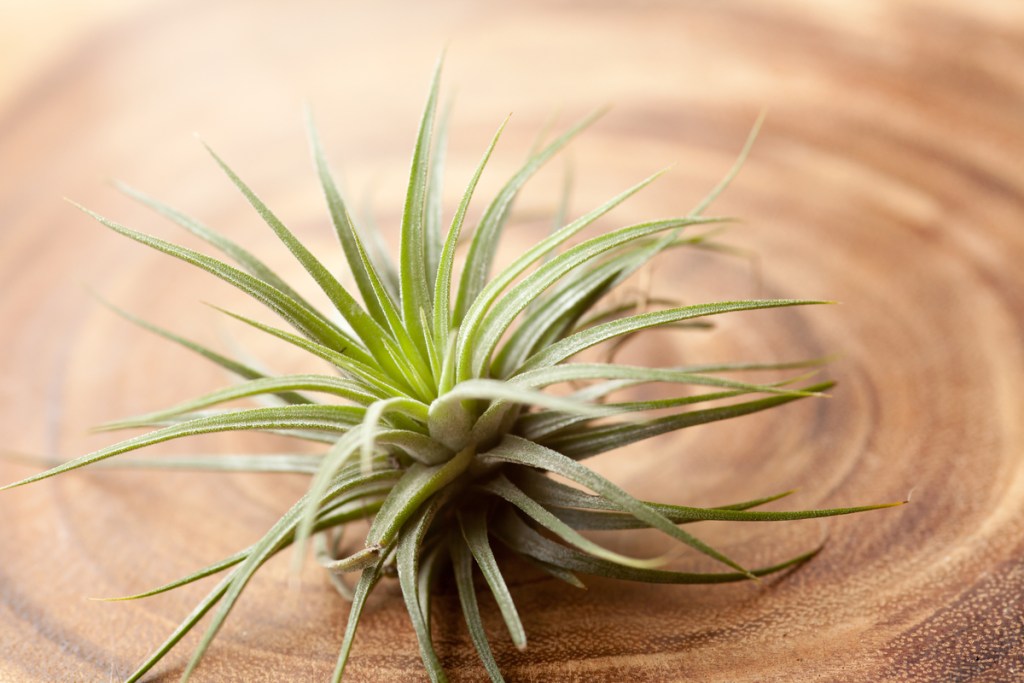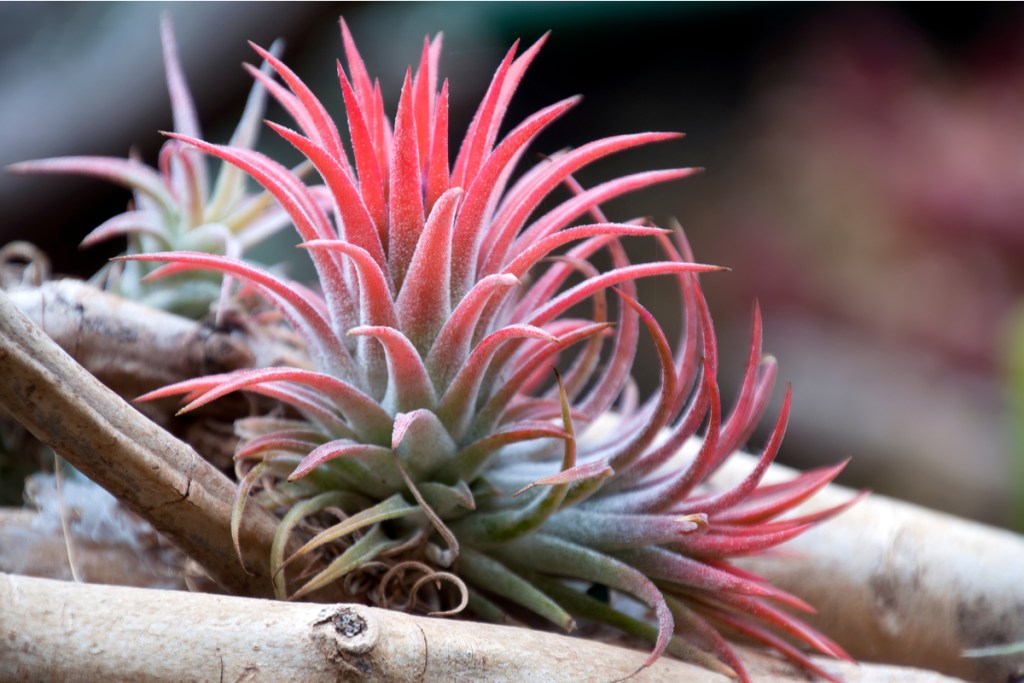Tillandsia ionanthas, also known commonly as sky plants, are just one of over 500 tillandsia varieties. It’s popular among air plant enthusiasts and home gardeners because of the stunning grayish-green leaves that deepen in color as they grow. As far as air plants go, the tillandsia ionantha is a rather adaptable one that needs little maintenance, which makes it a great option for beginners who aren’t used to caring for plants that don’t grow in soil (that’s right!) — but how does that affect its care?

Benefits of growing air plants
Growing a tillandsia ionantha — and any air plant, really — has a few benefits beyond sprucing up your space. Some are similar to those of regular houseplants:
- Plants help reduce stress. Houseplants, including air plants, have the ability to help you feel calmer, happier, and more relaxed in your space
- Air plants reduce certain indoor pollutants. Many plants have this capability, and air plants are no exception. They remove certain amounts of carbon dioxide from the air as they photosynthesize, as well as removing other pollutants to help purify and improve air quality.
A unique benefit to air plants, though, is that they don’t require soil to grow — and the tillandsia ionantha is no different. Because they don’t need to be in soil (and won’t thank you if you plant them in it), tillandsia ionanthas are a versatile houseplant that are perfect for urban homes and small spaces. Need a desk plant but don’t want a dirt mess? Get a tillandsia ionantha. Have a blank spot on your wall that you don’t know what to do with? Get a tillandsia ionantha. They can grow beautifully on shelves, on wood, or in air-plant-specific holders. And as long as they have proper lighting, they can thrive anywhere.
Caring for your tillandsia ionantha
Tillandsia ionanthas love warm, humid environments kept between 60 and 80 degrees Fahrenheit. They can still survive and thrive in drier climates, as long as you keep up with a regular misting schedule to increase humidity (and have a space humidifier, if you need) and keep them happy. Be wary of over-misting, though, and pay attention to how your air plant is responding. Especially if it’s your first air plant, it can take a bit of trial and error to figure out the right amount.
Conversely, cooler temperatures in the winter will help encourage flowering. Just be sure to stay within the preferred range so that you don’t take the plant out of its comfort zone and cause undue stress.
One of the biggest changes in air plant care from standard houseplant care is fertilization. Liquid fertilizers are usually added to the soil, so is it even possible to fertilize an air plant? Surprisingly, yes! There are air plant fertilizers that you can add to a misting spray (following the directions) to feed your tillandsia ionantha no more than twice a month during the summertime.
Light needs: Indirect light is best; strong, full sunlight can dry out the plant
Water needs: Light misting a few times a week, possibly more if you live in a drier climate; allow the air plant to dry upside down so water doesn’t get trapped in the leaves; soaking is not recommended
My tillandsia ionantha is blooming! Now what?
When your tillandsia ionantha blooms, it’s positively stunning. The flowers are small, ranging from white to yellow in color, and bloom at the tops of purple shoots. While blooming, the leaves on the tillandsia ionantha also develop pink or reddish hues.
Unfortunately, the beauty of these flowers is a bit bittersweet. Tillandsia ionanthas only bloom once during their lifetime, and it happens when they’re close to dying. It can happen at any time, whether it’s after only having the plant for a year or several years. Don’t worry, though! After it blooms, a well-cared-for tillandsia ionantha will produce a few pups before dying. With luck, you’ll be able to separate them and have more for your collection.

How to propagate tillandsia ionantha pups
Successfully propagating tillandsia ionantha pups is fairly easily! Once they start sprouting as offshoots from the parent plant, wait until they’re about half the size and then separate them with a pair of sterilized shears or scissors, or a sterilized knife. If done properly, you’ll have a new, growing tillandsia ionantha to display proudly in your collection!
What to do if there are pests on your air plant
Perhaps one of the most fabulous aspects of growing tillandsia ionanthas in your home is that very rarely do they attract pests. Most insects and mites are drawn to houseplants in soil, especially ones with soggy soil or weakened foliage. Because air plants don’t grow in dirt, their chances of becoming infested are very low. If you do happen to see a bug or two on your tillandsia ionantha, don’t sweat it. Removing them is as easy as rinsing it off and hanging it upside down to dry. It’s truly a low-maintenance, minimal-care plant.


